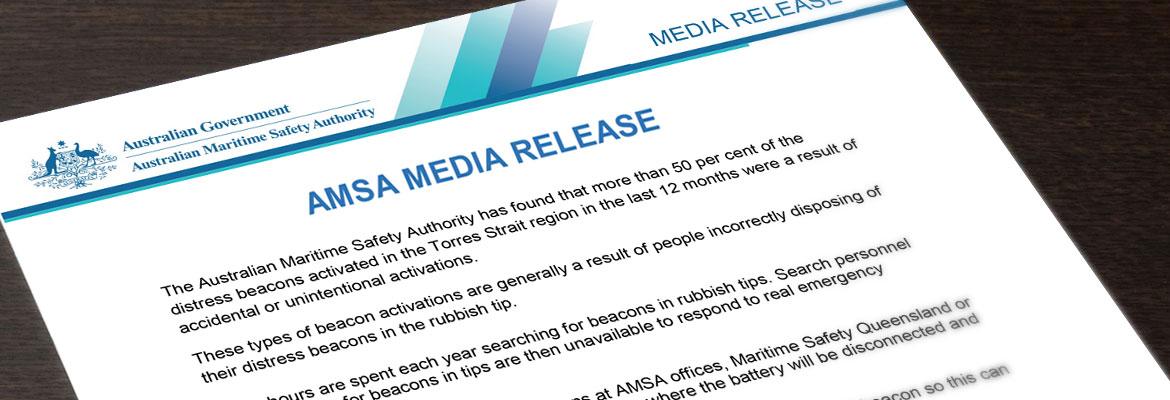
Since January 1 the Australian Maritime Safety Authority’s Rescue Coordination Centre (RCC Australia) has dealt with five incorrectly disposed beacons activated in South Australia, New South Wales, Tasmania and Western Australia.
A majority of these were found in rubbish tips or waste management facilities and resulted in costly searches using valuable search and rescue assets.
AMSA Chief Executive Officer Graham Peachey said it was vital people took their old beacons to BatteryWorld stores and other nominated sites for disposal, to avoid them activating in rubbish dumps.
“Beacons thrown out in the rubbish can activate and tie up assets that could be needed in real search and rescue situations,” Mr Peachey said.
“Many of these beacons are found in rubbish tips after helicopters or planes are tasked to locate them.”
AMSA urges people to replace older style 121.5MHz distress beacons which were phased out in 2009.
People must have a 406MHz beacon, preferably with GPS capability, as the older style beacons are no longer detected by satellite.
“Anyone with a 121.5MHz beacon needs to understand these are not reliable in an emergency situation,” Mr Peachey said.
“They rely on aircraft overhead to detect the signal but this is not guaranteed.
“There is no guarantee 121.5 beacons will ever be heard if they are not in hearing ragne of an aircraft that is equipped and listening to the 121.5MHz frequency. They are not detected by satellite.”
If activated the older beacons can cause significant disruption to air traffic control as they transmit on the aeronautical distress frequency.
This has the potential to mask other emergency signals, risking those in genuine emergency situations.
Mr Peachey said in 2013 RCC Australia responded to 48 beacons activated due to incorrect disposal.
“Our main concern is responding to these beacon activations may result in the diversion of personnel and search assets from a real emergency,” he said.
In January an older style beacon activated in an Adelaide dump near the airport, resulting in a rescue chopper being tasked to locate it.
Another was located in a tip in Northern Tasmania after a rescue chopper was tasked to find it.
Mr Peachey said these helicopters often also perform emergency medical services duties and diverting them to investigate beacon activations that turn out to be false was frustrating for the crews and the authorities.
Further information on beacons, where and how to dispose of them, or to disconnect the battery is available at www.beacons.amsa.gov.au
Audio of the noise transmitted on the aeronautical distress frequency is available to media on request.
Media Enquiries: 1300 624 633